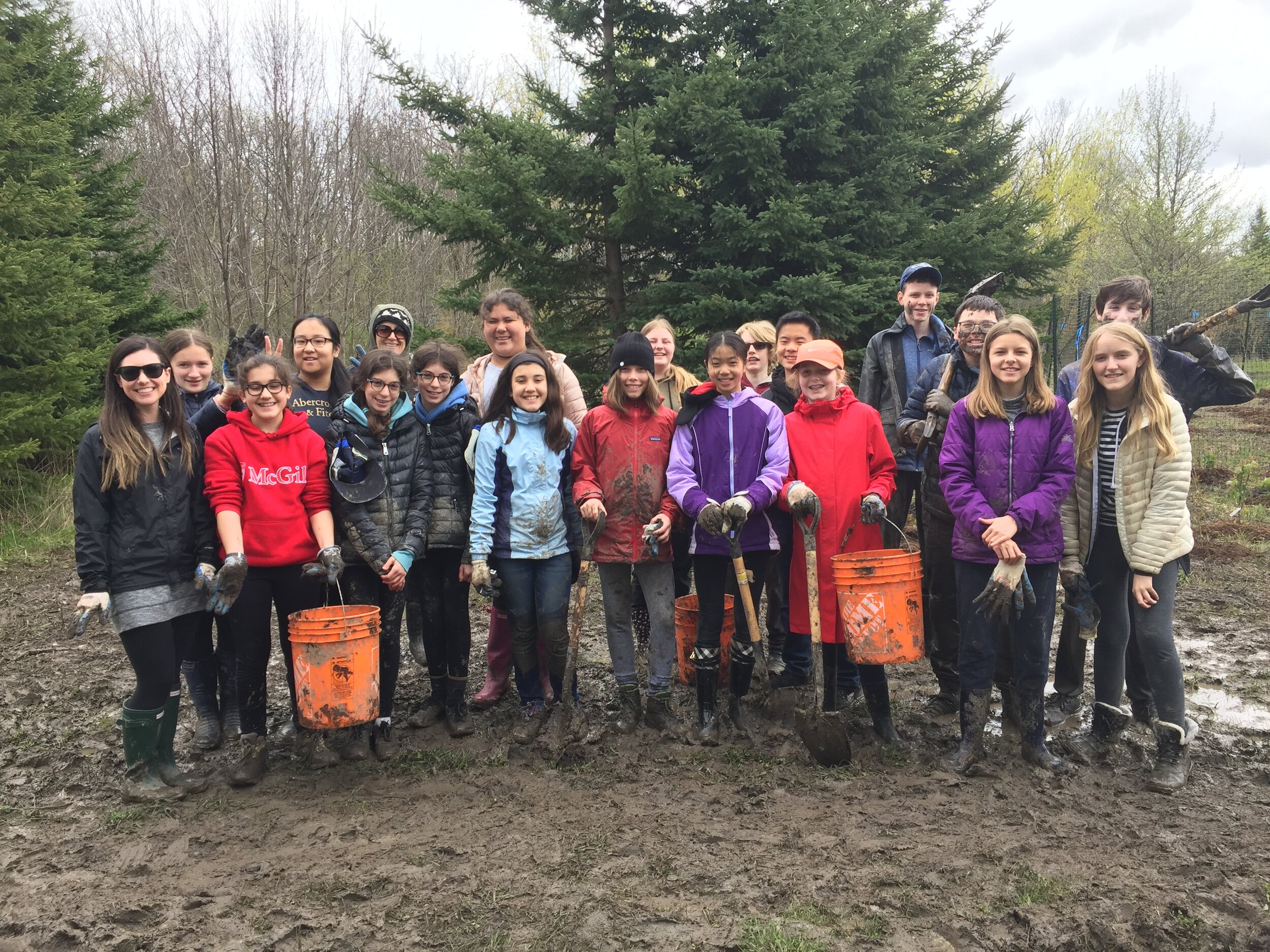
Alternate-Leaf Dogwood (Cornus Alternifolia)
The Alternate-Leaf Dogwood is an ornamental tree and is planted as a source of food for birds. Note: the dark blue-black berries are not edible by humans.

Sgt. John Peter Heinig – The Story of a Lost Aircraft that Kept His Story Alive
On November 15, 2018, a WWII-crash site research team in Germany reached out to the Edmonton Journal to find the families of Halifax Mk.II bomber of 10 Squadron Royal Air Force, after having recently found their crash site.

Planting Trees in Whitby as Part of Two Billion Trees
“The funding provided by Natural Resources Canada through the Two Billion Tree Program is a game changer. Not only will we be able to support a wealth of worthwhile planting projects, but our donors will be highly motivated to continue to provide support knowing that it is being matched by our federal government. This allows us to continue to focus on our mission of planting trees where Canadians live, work and play — and the Lynde Shores Conservation Area restoration project is a great example of the kind of ecological and social benefits we’ll see as a result of our work.” - Mark Cullen; President, Trees for Life

Alaska Paper Birch (Betula Neoalaskana)
The Alaska Paper Birch is a small tree with many stems reaching up to 15 meters tall. It is confined to the Northeastern portion of British Columbia and the Northern border of the Yukon Territories; however, is prominent from Northwestern Ontario across to Western Alaska.

Natural landscapes key to Canadian cities, rural areas for building climate resilience, experts say
"Grasslands are very important carbon sinks ... and the White Lake Basin Biodiversity Ranch is a key grassland landscape in the southern interior of British Columbia," said Jasper Lament, CEO of the Nature Trust of B.C.

Climate change: Planting extra trees will boost rainfall across Europe
A new study found that converting agricultural land to forest would boost summer rains by 7.6% on average.

American beech (Fagus grandifolia)
American Beech is a medium sized tree that grows up to 25 meters and can live for over 200 years. It grows across Southern and central Ontario.

Local Enhancement & Appreciation of Forests (LEAF)
This Spring, Trees for Life supported the planting of over 1,400 trees in York and Durham Regions through LEAF's Community Tree Planting and Backyard programs. Over the last 10 years, LEAF has had an 80% survival rate with their Backyard program.

Environment Hamilton
Funding was provided to double the successful Backyard Trees Please program giveaway through Environment Hamilton's Backyard Tree Planting Program.

Trees CO2
Co-founders Lauren and Kaitlin launched The Step Up Challenge, a campaign to engage fellow students in a fitness challenge and in a campaign to raise money for planting trees. Funds paid for 2,650 trees to be planted by Forests Ontario. Another 2,500 trees will be planted by students at Claireville Conservation Area, in partnership with the Toronto Regional Conservation Authority (TRCA). Funding has been provided by Mackenzie Investments and GrandTrees/Trees for Life.

Toronto and Region Conservation Authority (TRCA)
This year, Trees for Life is funding the planting of just under 9,000 trees with the TRCA. These trees will be planted at locations such as the Nashville Resource Management Tract, Boyd Park Conservation Area, King's Park, Claireville Conservation Area and more.

Nursery Plantings
We are so grateful to the many nurseries who have decided to plant some of their tree stock to reforest their properties. These nurseries include AVK Nurseries in Rockton, Dutchmaster Nurseries in Brougham, NVK Nurseries in Waterdown, Pineneedle Farms in Pontypool, Uxbridge Nursery in Uxbridge, Winkelmolen Nurseries in Lynden, Next Step Landscaping in Millgrove, and multiple locations through St. Williams Nursery & Ecology Centre. Funding is being provided to plant 121,010 trees this Spring and Fall.

Lynde Shores • 2021
3,500 trees are being planted this Fall as part of the Lynde Shores Conservation Area Restoration Project. This property is managed by the Central Lake Ontario Conservation Authority (CLOCA) to protect the natural heritage features and functions providing the tools, resources, and networks to expand existing tree-planting initiatives, implement new ones, and educate members of their communities about the vital role of trees.

Ganaraska Forest • 2021
38,000 trees will be planted in the Northumberland Region with funds provided by Trees for Life. These trees will be planted this Fall, both in the Ganaraska Forest and on private land. The trees planted at the Ganaraska Forest will be under planting trees to increase biodiversity and the health of forest.

Why a Tree Is the Friend We Need Right Now
I was worried that afternoon about an ill family member, and as I stared at her gnarled trunk, I thought of all this tree has survived. I watched the light filter through her canopy and listened to a squirrel chatter on a branch. And I felt better.

America’s national parks in a hotter world
For generations, the core mission of the National Park Service has been absolute conservation. Instructions to preserve iconic landscapes unchanged are inscribed in the founding documents of many parks. But what happens when climate change makes that impossible?

Buzz in the air as planting begins at Barrhaven pollinator meadow
A 15-acre swath of Hydro Ottawa land will soon be a buzzing metropolis of bees, birds and butterflies as the Rideau Valley Conservation Authority (RVCA) helps plant one of the largest pollinator meadows in Eastern Ontario.

Joanne Chory is using plants to save the planet
Human-caused climate change was putting humanity’s future in peril, she said in recorded remarks. Survival would depend on Earth’s original carbon-capture machines, the most effective tools for getting rid of greenhouse gases.

The Cycling Fans Who Watch the Trees
When all of Belgium tunes in to watch the Tour of Flanders bicycle race, Pieter De Frenne watches the trees.
They’re only on screen for as long as it takes the peloton to whiz by, but it’s enough for De Frenne to recognize them, log them, and gather a tiny insight into how the planet is changing. That’s because De Frenne is a pro cyclist in his dreams and a pro botanist in real life. And along with a team from the University of Ghent, he figured out that somewhere in Belgium’s annual festival of sore legs, cobbled hills and heady beers, there was climate science to be done.

Trees Are Not Just “For the Birds”
Most bird lovers notice and appreciate trees. Trees are often what we see when looking for the source of that nearby hooting, chirping, tweeting, or twittering. Expert birders may even know which trees are the preferred food source or habitat for our feathered friends. And with increasing concerns about how we will adapt to a changing climate, trees are gaining more attention for the many ecosystem services they provide, particularly in urban environments.

